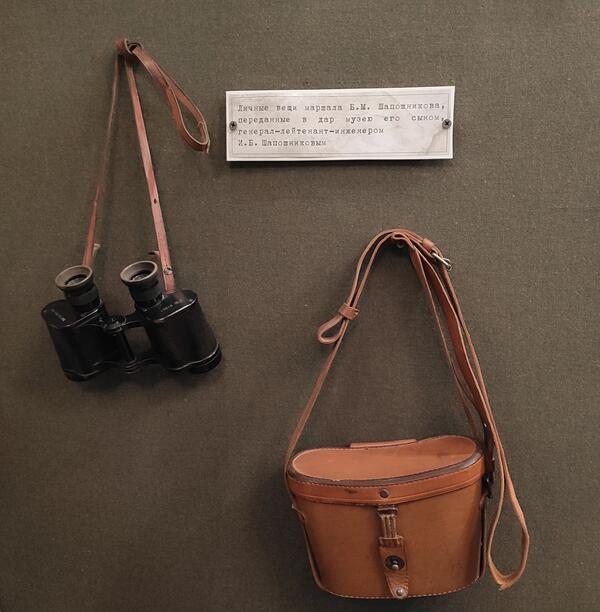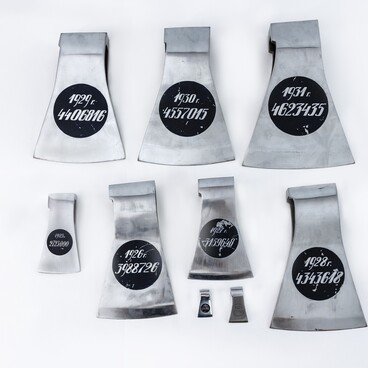The collection of the Zlatoust City Museum of Local Lore includes a number of memorial exhibits. One of them is brass field binoculars made in the 1930s. Their metal parts are coated with black paint. The body bears inscriptions: “6×30 No. 13911 Precis. Mech. Plant No. 19”.
The optical instrument was manufactured at Precision Mechanics Plant No. 19, as indicated on the stamp. The history of the plant was rather complicated. Initially, in 1911 and 1912, branches of the German Hertz and Zeiss factories were opened in Riga, in 1915, those were evacuated to Petrograd along with all the equipment and personnel. A single enterprise was created there. In 1918, it was evacuated to Voronezh, then to Perm, and then to Podolsk.
During the move, equipment was lost, many workers left the enterprise: in 1916, the number of employees was 342, but in 1920, only 237 were left. Nevertheless, from the middle of 1919, work was reestablished. Yet, in six months just 159 binoculars were produced, despite the fact that, when still in Petrograd, 250 binoculars were manufactured per month. In 1926, it was decided to move the plant to the village of Banki near Pavshino, to the site of the future town of Krasnogorsk.
In the 1930s, in addition to 6×30 binoculars, Precision Mechanics Plant No. 19 produced, 8×30 and 8×40 binoculars, rangefinders, altiscopes, as well as tank commander panoramic periscopes, surveillance periscopes, stereo tubes. 6×30 field binoculars were equipped with a narrow strap and completed with a brown leather case. The magnification factor is 6 with a lens diameter of 30 millimeters.
These were binoculars with individual focusing. The optical instrument was used to observe, search for and examine targets, measure horizontal and vertical angles and the distance to objects using a graticule in the right monocular.
The exhibit previously belonged to a native of Zlatoust, Marshal of the Soviet Union Boris Mikhailovich Shaposhnikov and was in his use from 1939 until the end of his life. The binoculars were donated to the museum by Marshal’s son, Lieutenant General, Doctor of Military Sciences Igor Borisovich Shaposhnikov in 1982.
The optical instrument was manufactured at Precision Mechanics Plant No. 19, as indicated on the stamp. The history of the plant was rather complicated. Initially, in 1911 and 1912, branches of the German Hertz and Zeiss factories were opened in Riga, in 1915, those were evacuated to Petrograd along with all the equipment and personnel. A single enterprise was created there. In 1918, it was evacuated to Voronezh, then to Perm, and then to Podolsk.
During the move, equipment was lost, many workers left the enterprise: in 1916, the number of employees was 342, but in 1920, only 237 were left. Nevertheless, from the middle of 1919, work was reestablished. Yet, in six months just 159 binoculars were produced, despite the fact that, when still in Petrograd, 250 binoculars were manufactured per month. In 1926, it was decided to move the plant to the village of Banki near Pavshino, to the site of the future town of Krasnogorsk.
In the 1930s, in addition to 6×30 binoculars, Precision Mechanics Plant No. 19 produced, 8×30 and 8×40 binoculars, rangefinders, altiscopes, as well as tank commander panoramic periscopes, surveillance periscopes, stereo tubes. 6×30 field binoculars were equipped with a narrow strap and completed with a brown leather case. The magnification factor is 6 with a lens diameter of 30 millimeters.
These were binoculars with individual focusing. The optical instrument was used to observe, search for and examine targets, measure horizontal and vertical angles and the distance to objects using a graticule in the right monocular.
The exhibit previously belonged to a native of Zlatoust, Marshal of the Soviet Union Boris Mikhailovich Shaposhnikov and was in his use from 1939 until the end of his life. The binoculars were donated to the museum by Marshal’s son, Lieutenant General, Doctor of Military Sciences Igor Borisovich Shaposhnikov in 1982.






